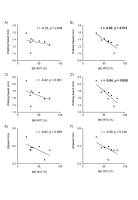The Associations between Asymmetries in Quadriceps Strength and Gait in Unilateral Transtibial Amputees
Journal article
Sibley, A., Strike, S., Moudy, S.C. and Tillin, N.A. (2021). The Associations between Asymmetries in Quadriceps Strength and Gait in Unilateral Transtibial Amputees. Gait and Posture. 90, pp. 267-273. https://doi.org/10.1016/j.gaitpost.2021.08.027
| Authors | Sibley, A., Strike, S., Moudy, S.C. and Tillin, N.A. |
|---|---|
| Abstract | Background – Individuals with unilateral transtibial amputations (ITTAs) are asymmetrical in quadriceps strength. It is unknown if this is associated with gait performance characteristics such as walking speed and limb symmetry. |
| Keywords | maximum voluntary torque, rate of torque development, walking speed, gait mechanics, loading |
| Year | 2021 |
| Journal | Gait and Posture |
| Journal citation | 90, pp. 267-273 |
| Publisher | Elsevier |
| Digital Object Identifier (DOI) | https://doi.org/10.1016/j.gaitpost.2021.08.027 |
| Publication dates | |
| Online | 08 Sep 2021 |
| Publication process dates | |
| Accepted | 31 Aug 2021 |
| Deposited | 20 Sep 2021 |
| Accepted author manuscript | License File Access Level Open |
https://openresearch.lsbu.ac.uk/item/8xw0z
Download files
Accepted author manuscript
| Sibley et al. 2021. Gait and posture - pre-print.docx | ||
| Figure 1.jpg | ||
| License: CC BY-NC-ND 4.0 | ||
| File access level: Open | ||
108
total views91
total downloads0
views this month0
downloads this month
